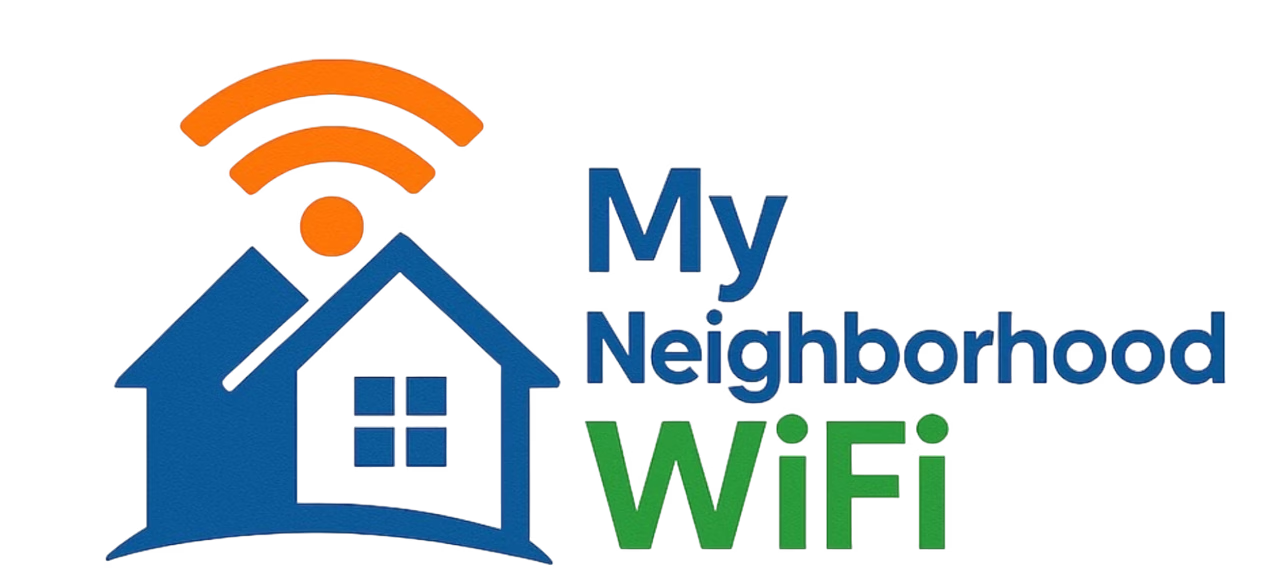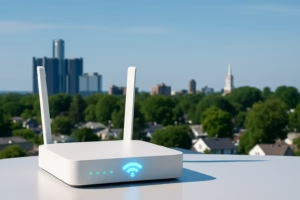
Living in a large home comes with many benefits—more space, more privacy, and more room for family and guests. But there’s one challenge that many homeowners face: ensuring seamless internet connectivity across every corner of the house. If you’ve ever had Wi-Fi dead zones in the upstairs bedroom or buffering issues in the basement, you know how frustrating it can be. Choosing the best internet options for seamless connectivity in large homes requires understanding signals, equipment, and setup strategies that make your network truly efficient.
Why Large Homes Struggle with Wi-Fi
Wi-Fi signals weaken as they travel through distance, walls, furniture, and floors. For large multi-story homes, this often results in inconsistent internet coverage. Common problems include:
- Dead zones in far or upstairs rooms
- Slower speeds in areas far from the router
- Interference from thick walls, appliances, or neighboring networks
- Overloaded connections when multiple devices are streaming or gaming at once
Key Internet Options for Large Homes
Getting seamless connectivity isn’t just about choosing a good internet provider—it’s about having the right equipment and setup. Let’s break down the best options.
1. Mesh Wi-Fi Systems
Mesh Wi-Fi is one of the most effective solutions for large homes. Instead of relying on a single router, mesh systems use multiple nodes placed strategically around your house. These nodes communicate with each other, creating a unified network that ensures consistent coverage everywhere.
- Pros: No dead zones, easy to expand coverage, self-healing networks that reroute traffic.
- Cons: More expensive than traditional routers, may reduce speed if using wireless backhaul.
For homes over 3,000 square feet, mesh Wi-Fi is often the go-to choice. Many homeowners on Reddit’s HomeNetworking community recommend placing nodes in hallways and stairwells to maximize coverage.
2. Wired Ethernet Backhaul
An Ethernet backhaul connects mesh nodes or access points to the main router with wired cables. This prevents bandwidth loss that can happen in wireless-only connections.
- Pros: Fastest and most stable connection, ideal for 4K streaming and gaming.
- Cons: Requires wiring throughout the house, which may not always be practical in older homes.
Many homeowners choose to wire only high-priority areas, like home offices or entertainment rooms, while keeping wireless mesh coverage for common spaces.
3. Access Points and Range Extenders
Access points and Wi-Fi extenders are budget-friendly alternatives to full mesh networks. They work by rebroadcasting the Wi-Fi signal to reach further into your home. Unlike modern mesh systems, however, they often create separate networks.
- Pros: More affordable, simple setup for extending Wi-Fi to one or two trouble spots.
- Cons: May cause slower performance, separate networks can cause disruptions when devices switch.
On Quora discussions about Wi-Fi coverage, many users mention that extenders are only a short-term fix, while mesh is better for long-term seamless browsing.
4. Powerline Adapters
Powerline adapters send internet signals through your home’s electrical wiring and extend connectivity to distant rooms. These are useful when thick walls interfere with Wi-Fi signals.
- Pros: Easy to install, faster than some extenders, works well for difficult architectural layouts.
- Cons: Performance depends on the quality of the home’s electrical system.
Best Practices for Wi-Fi Setup in Large Homes
No matter the technology you pick, placement and configuration matter. Here are some best practices:
- Place the main router centrally in your home, preferably on the main floor.
- Keep routers and mesh nodes elevated (on shelves or tables) instead of on the floor.
- Avoid placing equipment near microwaves, metal appliances, or thick concrete walls.
- Use wired connections for high-demand devices like gaming consoles or smart TVs.
Equipment Considerations: Routers, Nodes, and Speeds
Choosing the right equipment matters just as much as the internet connection itself. If you live in a large home with multiple users:
- Go for Wi-Fi 6 or newer technology for better performance across many devices.
- Pick a mesh Wi-Fi system with enough nodes (at least 3 for homes over 3,500 sq. ft.).
- Invest in a strong router with at least dual-band capabilities.
Smart Home Devices and Large Homes
Large homes often have dozens of smart devices—cameras, thermostats, lights, and speakers. These devices can quickly crowd a weaker network. A strong, seamless connection is essential to avoid disconnects and delays.
Handling Multi-Story Homes
If your house has three or more floors, ensure one mesh node or access point is installed per floor. This prevents upstairs bedrooms or basements from suffering weak signals.
Outdoor Coverage
Many large homes have big yards, pools, or patios where Wi-Fi is needed. Mesh nodes designed for outdoor use can keep your backyard connected, ensuring strong signals for streaming music or security cameras. Some users on Facebook community groups suggest waterproof mesh units for reliable outdoor performance.
Comparison Table: Options for Large Homes
| Option | Strength | Weakness |
|---|---|---|
| Mesh Wi-Fi | Seamless coverage, scalable | Higher cost |
| Ethernet Backhaul | Fastest, most stable | Requires wiring |
| Access Points | Affordable, targeted coverage | Separate networks, slower |
| Powerline Adapters | Useful for thick walls | Dependent on electrical wiring |
Tips for Keeping Your Network Smooth
- Update your router’s firmware regularly for performance and security.
- Use different SSIDs for main and guest networks to balance usage.
- Restart routers and mesh nodes every few weeks to clear memory.
- Run occasional speed tests to see if specific areas need improvement.
When to Upgrade Your Setup
If your home still struggles with slowdowns despite having fast internet speeds, it may be time for an upgrade. Signs you need a better system include:
- Buffering video in multiple rooms at once
- Frequent Wi-Fi drops during video calls
- Smart home devices randomly disconnecting
Conclusion
The best internet options for seamless connectivity in large homes are all about combining the right connection type with the right equipment. Mesh Wi-Fi systems are often the best all-around choice, while wired Ethernet backhaul provides the most stable performance. For those on tighter budgets, access points or powerline adapters can help fill in dead zones. With the right setup, every room—from attic to basement—can enjoy uninterrupted high-speed internet.
“Most inquiries are answered within the same day”
Written by admin
Content writer and tech enthusiast sharing insights on internet connectivity.



